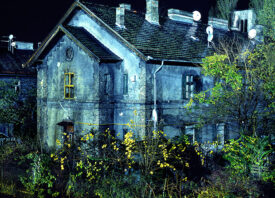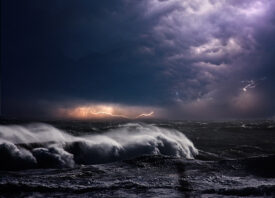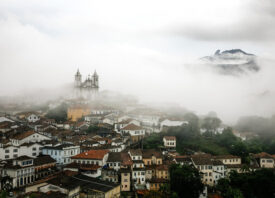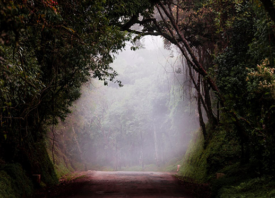Search this site
Otherworldly Images of Gemstones Photographed Through a Microscope
 Dolomite in quartz with rutile, Minas Gerais, Brazil
Dolomite in quartz with rutile, Minas Gerais, Brazil
 Negative crystal in spinel, Vietnam
Negative crystal in spinel, Vietnam
 Rutile on hematite in quartz, Novo Horizonte, Bahia, Brazil
Rutile on hematite in quartz, Novo Horizonte, Bahia, Brazil
Photography is often (though not always) considered a lens-based media. Danny J. Sanchez broadens the definition of the lens with a process he calls “photomicrography,” the act of taking a photograph through a microscope.
Sanchez is both a photographer and certified gemologist. Blending science and art, Sanchez’s images of gem stones are photographed through a microscope and composed with a technique called “focus stacking.” Each photograph is comprised of multiple exposures stacked on top of each other to achieve a manufactured depth of field that can be produced by one photograph alone. In his laboratory, Sanchez studies the natural geometry of his subject before photographing, using fiber optic tubes for lighting, and directing it with miniscule reflectors and black foil.
Exploring gemstones, he finds worlds within worlds. Though products of our earth, these stones have their own geography of imitate mountain ranges, caves, and quarries in vibrant, sparkling hues. Many of the photographs show the imperfections in the stones that would render them less valuable to collectors, but which Sanchez finds particularly appealing.
 Staining within an etch tube in quartz, Brazil
Staining within an etch tube in quartz, Brazil
 Hematite bloom in quartz, Brazil
Hematite bloom in quartz, Brazil
 Apatite in spinel, Myanmar
Apatite in spinel, Myanmar
 Petroeum in quartz with methane bubble, Pakistan
Petroeum in quartz with methane bubble, Pakistan
 Quartz with black inclusions within negative crystals, Brazil
Quartz with black inclusions within negative crystals, Brazil
 Opal in ironstone, Queensland, Australia
Opal in ironstone, Queensland, Australia
 Hourglass, color-zoned amethyst
Hourglass, color-zoned amethyst
 Muscovite in quartz, Brazil
Muscovite in quartz, Brazil
 Negative crystals in amethyst, Veracruz, Mexico
Negative crystals in amethyst, Veracruz, Mexico
All images © Danny J. Sanchez



